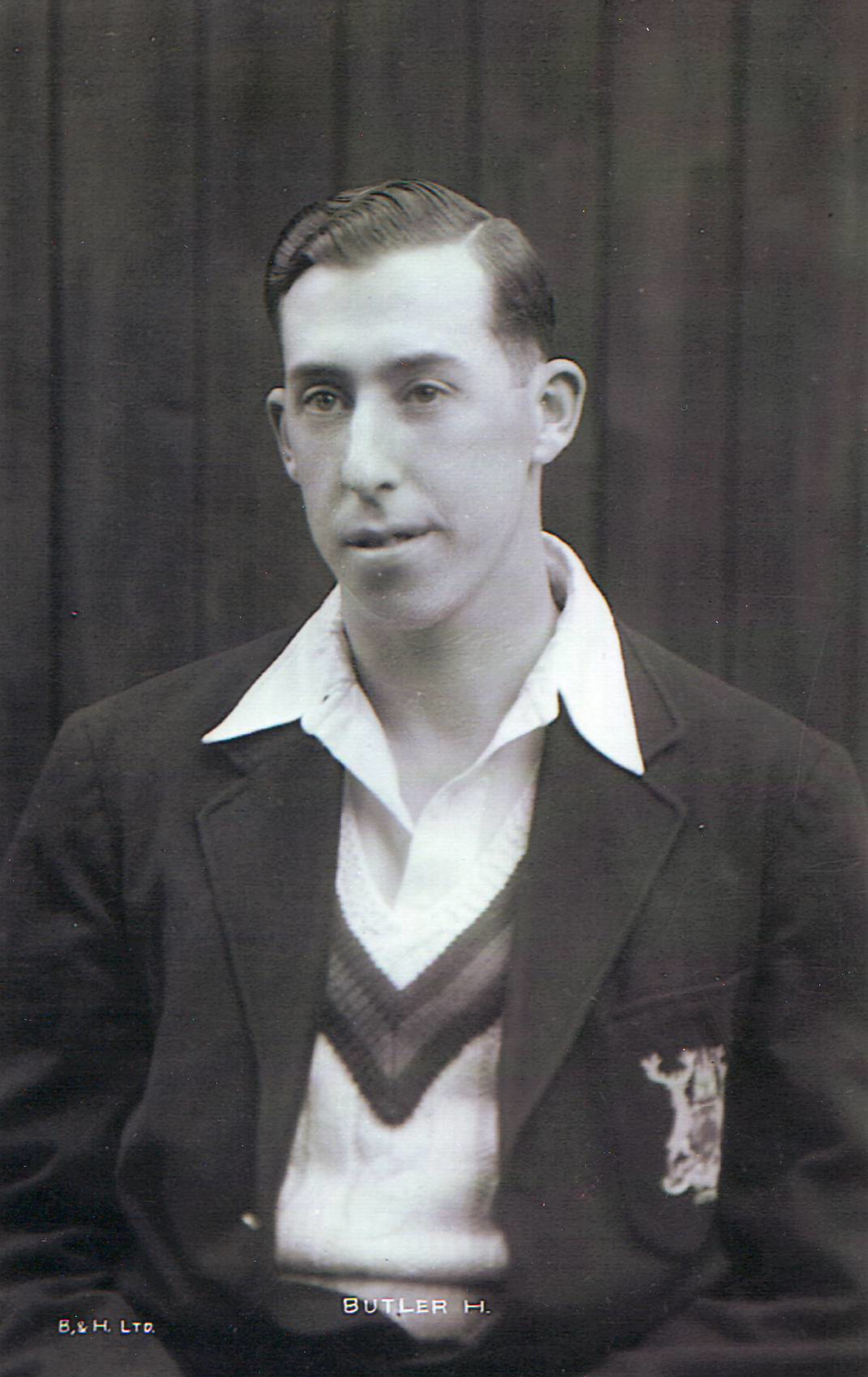Butler’s right-arm fast bowling was the most effective element of the Nottinghamshire attack between 1939 and 1952 when he topped the county’s bowling averages six times (more impressive than it might seem, given that no County Championship cricket was played during WWII).
In fact, Harold Butler, whilst serving with the RAF, played in a number of matches during the Second World War, even appearing at Trent Bridge against his home county for a Services XI on a couple of occasions.
Born in Clifton in 1913, he was once awarded £20 following an impromptu collection by the Trent Bridge crowd after taking a hat-trick against Surrey in 1937 as Notts beat the county for the first time in eight years. He took a second hat-trick that season against Leicestershire at Worksop and the third of his career came against Hampshire at Trent Bridge in 1939.
He took 100 first class wickets in 1939 and 1947 after first joining the county in 1933 to provide cover for Harold Larwood who struggled on the domestic front that year following his exertions during the ‘Bodyline’ series.
A genuine quick, Butler appeared in two Tests for England, against South Africa at Headingley in 1947 and West Indies at Port of Spain in 1948, the latter game coming after he had recovered from a bout of malaria that caused him to lose a stone-and-a-half in weight.
He never played Tests again, which is strange, given that he had a Test average of under 20, and that England were in need of a partner for Bedser.
Harold Butler was awarded a benefit by Notts in 1950 and it says much about his standing in the game that the great West Indian all-rounder Learie (later Sir Learie) Constantine turned out for the ‘Harold Butler XI’ in a benefit game at Bulwell CC.
He was forced to retire from first class cricket after dislocating his shoulder in the Championship game against Surrey in May 1954 and died in Lenton, Nottingham1991, aged 78.
November 2023
Nottinghamshire First-Class Number: 350
